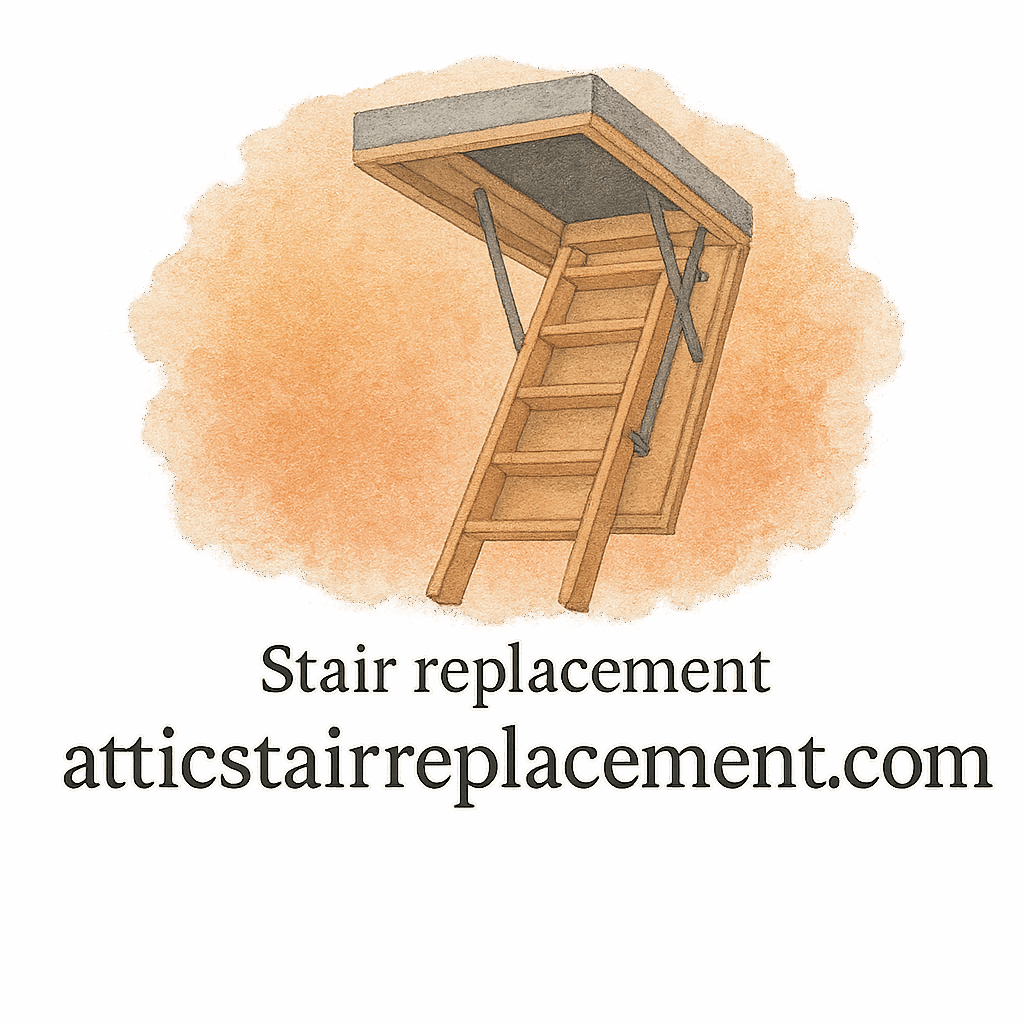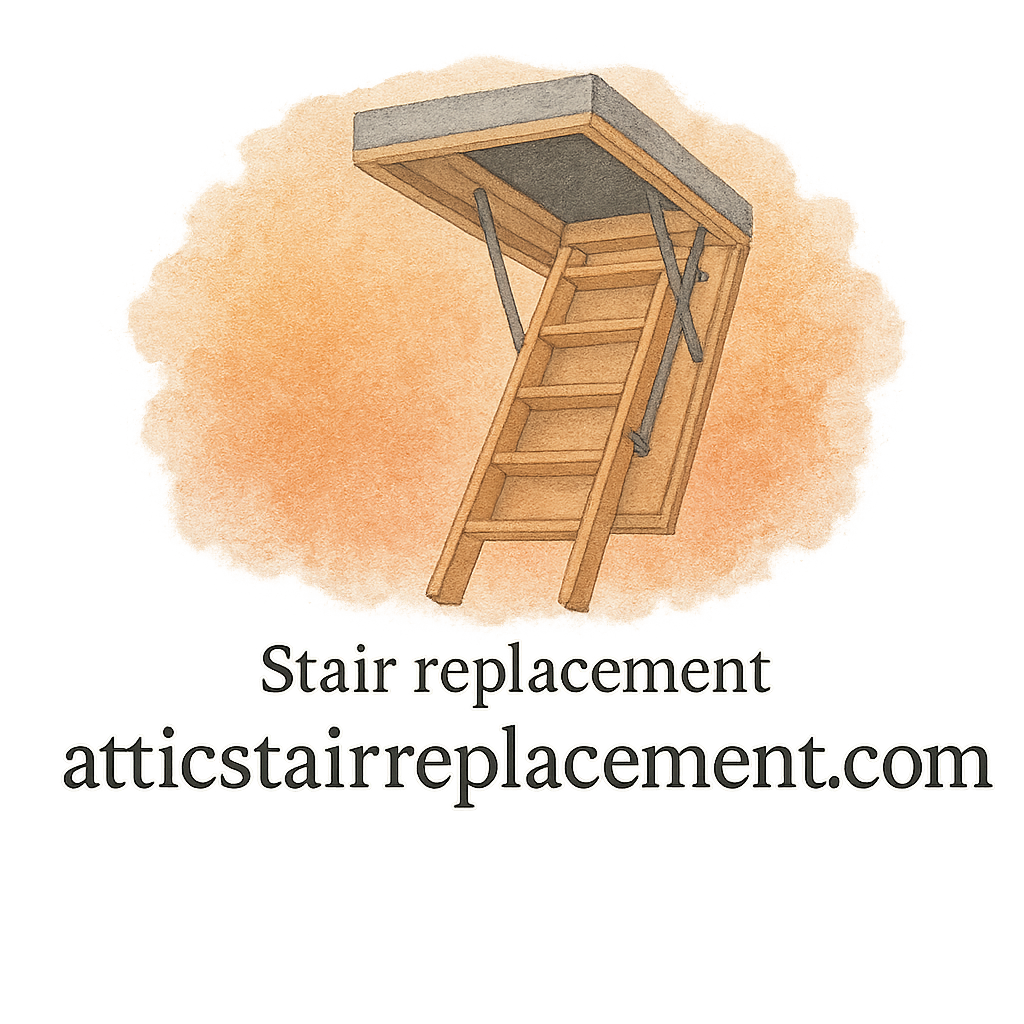Introduction
Let’s face it—attic stairs aren’t exactly the glamorous part of homeownership. But when they start creaking, cracking, or collapsing, you can’t ignore them. Before you jump into a full attic stair replacement, hold up! There are a few smart repair techniques that might save your wallet and your weekend.
This guide breaks down six effective repair methods to keep your attic stairs working like new without needing a total overhaul. By using these strategies, you might avoid a costly replacement and extend your attic stairs’ lifespan.
Why Attic Stairs Need Attention
Common Problems With Attic Stairs
Attic stairs go through a lot. Whether it’s folding stairs or telescoping ladders, they deal with weight stress, temperature shifts, and regular wear and tear. Common issues include:
- Loose or missing screws
- Wobbly steps
- Weak handrails
- Squeaky hinges
- Cracks in the wood frame
The Risks of Ignoring Issues
You might think, “Eh, it’s just a squeak.” But a small issue can lead to a safety hazard. Ignoring attic stair problems can cause sudden collapses or injuries. Plus, you may end up with higher costs when you’re eventually forced to replace the entire setup. Learn more about avoiding common attic mistakes.
When Should You Repair Instead of Replace?
Cost Considerations
If the cost of repair is under 50% of the price of new attic stairs, repair is often the way to go. Replacing everything can be pricey, especially with hidden labor costs. Check out our budget tips for staying cost-effective.
Evaluating Structural Integrity
A professional inspection—or your own careful eye—can tell you whether the structure can be saved. If the wood is strong and the damage is isolated, go for repair first. Use our expert advice for guidance.
Repair Technique #1: Tightening Loose Hardware
Tools You’ll Need
- Screwdriver or drill
- Replacement screws or bolts
- Level
Step-by-Step Process
- Open your attic stairs fully.
- Check each hinge, bracket, and step for movement.
- Tighten screws or replace any that are stripped.
- Use a level to check for wobbling.
Small adjustments can dramatically improve safety and stability. You’ll find more DIY advice on our DIY Installation page.
Repair Technique #2: Replacing Damaged Steps
How to Identify a Weak Step
If a step feels soft, cracks under pressure, or visually splinters, it’s time to swap it out. This is crucial for safety and job-quality.
Material Options
Use hardwood or reinforced metal for replacements. These materials last longer and handle more weight. Learn what’s most durable.
Repair Technique #3: Reinforcing the Frame
Using Brackets and Plates
Metal reinforcement brackets can secure weak joints. Install them at each corner or wherever the frame shifts. Screwing in steel plates can restore structural strength.
Preventing Future Frame Shifts
Make sure to check the attachment to the joists. Loose or uneven installation can create problems later. We cover this in-depth under home improvement.

Repair Technique #4: Lubricating Hinges and Springs
Best Products for Longevity
Use silicone-based or lithium grease. Avoid WD-40—it evaporates too quickly. Long-term lubricants reduce squeaks and wear.
How Often Should You Lubricate?
Every 6 months is a good rule of thumb. If you’re in a humid environment, you might need more frequent applications. Get more maintenance tips here.
Repair Technique #5: Fixing Squeaky Steps
DIY Noise Reduction Tricks
Sprinkle talcum powder or use wood glue and clamps. Sometimes, the squeak is just two boards rubbing. This simple fix can save hours.
When Squeaks Indicate Bigger Issues
If the sound is accompanied by movement or sagging, inspect the structural joints. That squeak might be a red flag. Don’t wait—explore preventive care.
Repair Technique #6: Reattaching or Replacing Handrails
Safety Tips During the Repair
Always disconnect attic access from power sources (like attic lights) and wear gloves. Handrails are crucial for safe climbing.
Matching Your Existing Hardware
Check with manufacturers or use universal kits. A mismatched rail could make things look sloppy—and feel unsafe. For contractor advice, we’ve got you covered.
When Full Attic Stair Replacement Is Inevitable
Signs You Can’t Ignore
- Deep frame cracks
- Bent metal or warped wood
- Multiple failed repairs
If you’re seeing these, replacement might be your best bet. Visit our attic stair replacement hub for full guides.
Planning Ahead
If you do need to replace, plan the job in the off-season for better contractor availability and potential discounts. Read our remodel and renovation tag for inspiration.
Final Thoughts on Repair Versus Replacement
Repairing your attic stairs can be a weekend project that saves you hundreds. But knowing when to let go and upgrade is just as important. Evaluate your specific needs, assess your stair’s condition, and don’t be afraid to seek expert guidance.
Conclusion
Don’t let creaks and cracks send you into a panic about replacing your attic stairs. With a few tools and a little elbow grease, you can handle most issues yourself. And if you eventually need to replace them, at least you’ll know you gave those stairs a fighting chance.
Explore more home projects, product reviews, and tips for smarter upgrades.
FAQs
1. How do I know if my attic stairs need repair or replacement? If the stairs wobble, creak loudly, or have visible damage—but the structure is still solid—repairs might work. Otherwise, it’s time to replace.
2. Can I repair attic stairs without professional help? Yes! Most repairs can be DIY with basic tools. Our DIY guide can help you get started.
3. What’s the average cost of attic stair repairs? Minor fixes range from $20 to $100, while professional repairs can cost more depending on severity.
4. How long should attic stairs last? With proper care, they can last 15–25 years. Follow our maintenance tips to extend lifespan.
5. Are all attic stairs the same size? No, they vary by manufacturer and model. Always measure before replacing or ordering parts.
6. Can I replace just one part of attic stairs? Absolutely. You can replace individual steps, hinges, or even rails instead of the entire unit.
7. Where can I find expert opinions on attic stair issues? Head over to our expert advice section for detailed insights and real-world guidance.


